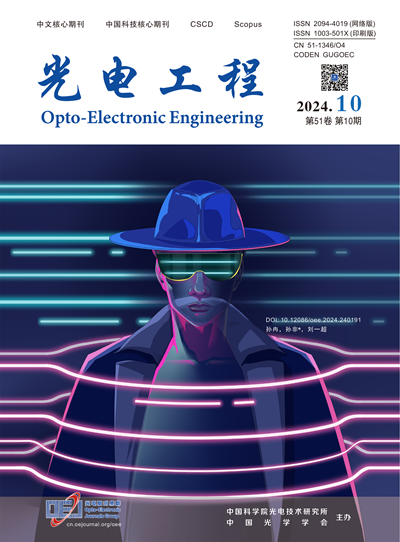Design and simulation of bionic compound eye with electrowetting liquid lens
Q3 Engineering
引用次数: 0
Abstract
To solve the problem that the bionic compound eye system can't zoom adaptively, a zoomable bionic compound eye system based on electrowetting-on-dielectric liquid lens cambered array is proposed. The influence of the system structure on the imaging performance is analyzed, and the adaptive zoom capability of the system and the moving range of the corresponding image plane are calculated. The results show that the field of view angle increases with the increase of the curvature of the base. Compared with the non-uniform lens array, the uniform lens array can significantly reduce the defocus aberration of the system. Reducing the size of the lens unit can also decrease the defocus aberration of the edge lens. When the object distance or receiver position is changed, the defocus aberration of the system will be reduced by adjusting the focal length of the lens unit. The movable range of the system receiver is 1.9 mm~15 mm.电润湿液体晶体仿生复眼的设计与仿真
针对仿生复眼系统不能自适应变焦的问题,提出了一种基于电润湿介质液体透镜曲面阵列的可变焦仿生复眼系统。分析了系统结构对成像性能的影响,计算了系统的自适应变焦能力和相应成像平面的移动范围。结果表明,视场角度随基底曲率的增大而增大。与非均匀透镜阵列相比,均匀透镜阵列可以显著降低系统的离焦像差。减小透镜单元的尺寸也可以减小边缘透镜的离焦像差。当物体距离或接收器位置发生变化时,通过调整透镜单元的焦距来减小系统的离焦像差。系统接收机的活动范围为1.9 mm~ 15mm。
本文章由计算机程序翻译,如有差异,请以英文原文为准。
求助全文
约1分钟内获得全文
求助全文
来源期刊

光电工程
Engineering-Electrical and Electronic Engineering
CiteScore
2.00
自引率
0.00%
发文量
6622
期刊介绍:
Founded in 1974, Opto-Electronic Engineering is an academic journal under the supervision of the Chinese Academy of Sciences and co-sponsored by the Institute of Optoelectronic Technology of the Chinese Academy of Sciences (IOTC) and the Optical Society of China (OSC). It is a core journal in Chinese and a core journal in Chinese science and technology, and it is included in domestic and international databases, such as Scopus, CA, CSCD, CNKI, and Wanfang.
Opto-Electronic Engineering is a peer-reviewed journal with subject areas including not only the basic disciplines of optics and electricity, but also engineering research and engineering applications. Optoelectronic Engineering mainly publishes scientific research progress, original results and reviews in the field of optoelectronics, and publishes related topics for hot issues and frontier subjects.
The main directions of the journal include:
- Optical design and optical engineering
- Photovoltaic technology and applications
- Lasers, optical fibres and communications
- Optical materials and photonic devices
- Optical Signal Processing
 求助内容:
求助内容: 应助结果提醒方式:
应助结果提醒方式:


